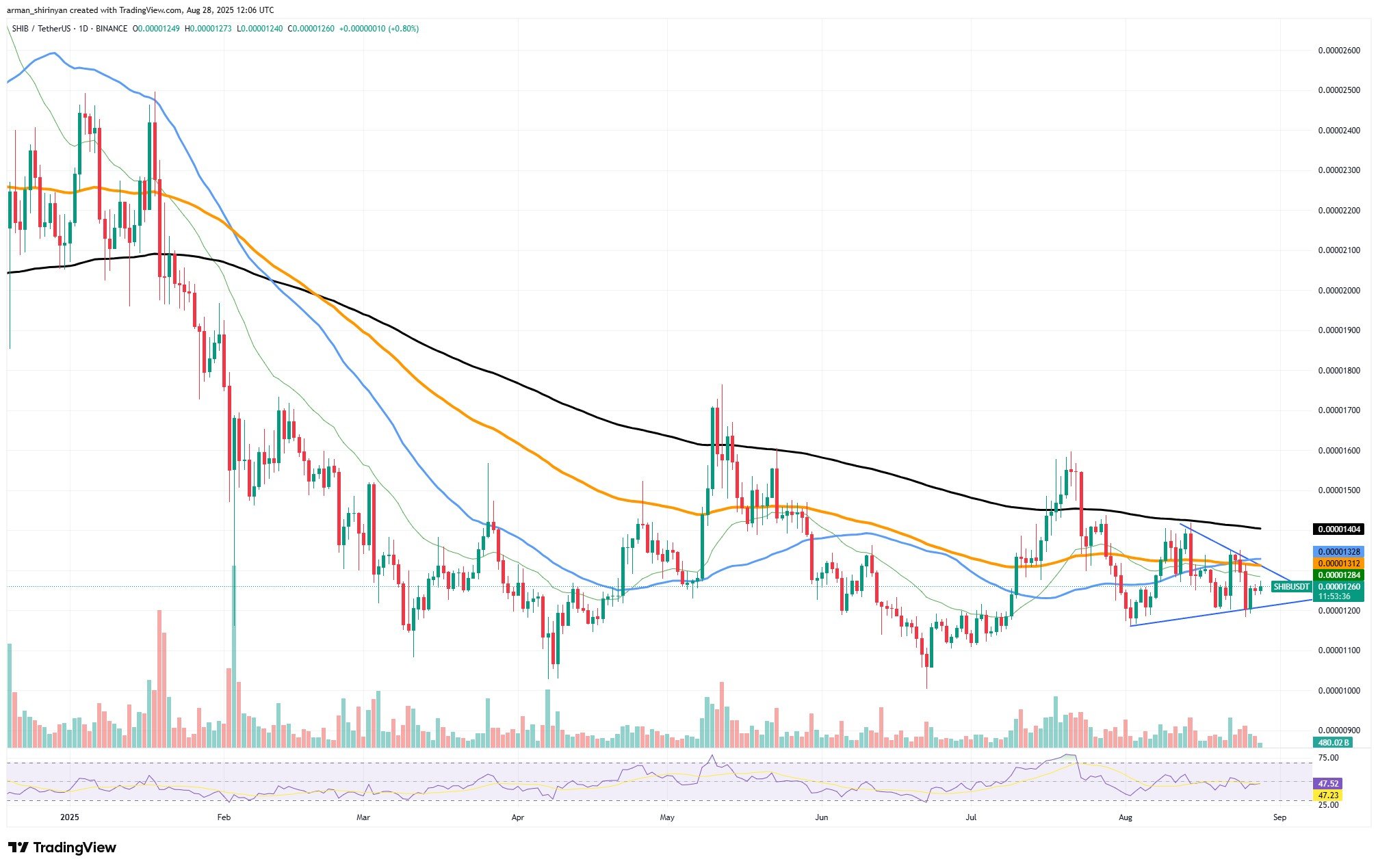SHIB is consolidating inside a symmetrical triangle around $0.0000126 after a sudden exchange inflow spike of ~20 billion SHIB; this raises short-term selling risk while setting up a volatility breakout—traders should watch $0.0000132 resistance and $0.0000120 support closely.
-
SHIB consolidation: trading between $0.0000132 resistance and $0.0000120 support.
-
Exchange inflows jumped from ~34B to ~51B SHIB in 24 hours, signaling potential selling pressure.
-
Price sits below 100‑ and 200‑day EMAs; RSI and volume are muted, indicating fragile bullish conviction.
SHIB consolidation and exchange inflows: SHIB trades near $0.0000126 after a 20B inflow spike—watch resistance at $0.0000132. Read the analysis and trade-plan. (COINOTAG)
What is SHIB consolidation and why does it matter?
SHIB consolidation is a period of tight price action inside a symmetrical triangle, currently around $0.0000126. This pause matters because the triangle narrows toward an apex and, combined with heavy exchange inflows, suggests a significant directional move—either a breakdown if selling accelerates or a squeeze if buyers absorb the inflows.
How do exchange inflows affect SHIB price action?
Exchange inflows increased dramatically: roughly 20 billion SHIB moved to exchanges in one day, rising total daily inflows from ~34 billion to ~51 billion, per CryptoQuant data. Large inflows historically indicate elevated selling intent because centralized exchanges provide liquidity for market exits.
At the same time, SHIB trades below its 100‑ and 200‑day EMAs (resistance), and momentum indicators such as the RSI are muted. Low relative volume versus prior spikes suggests that if selling accelerates, available buy-side liquidity may be insufficient, increasing the risk of a downside breakout.

SHIB/USDT Chart by TradingView
How can traders interpret the triangle pattern?
The symmetrical triangle shows converging support and resistance; a decisive close outside the range typically signals the breakout direction. A move above $0.0000132 with volume confirmation would reduce immediate downside risk. Conversely, a drop below $0.0000120 on higher sell volume could trigger accelerated selling.
Risk management: set stop-losses beyond the triangle boundaries and size positions for potential volatility. Consider that inflow-driven sell pressure can create fleeting dumps even if the longer-term trend remains intact.
Frequently Asked Questions
Could the inflow spike be a whale accumulation disguised as selling?
Large inflows to exchanges are typically associated with selling, but sometimes they precede redistribution or market-making activity. On‑chain analysis and exchange withdrawal patterns over the following 24–72 hours help clarify intent.
How soon could the triangle resolve into a breakout?
Symmetrical triangles generally resolve before the apex; given this pattern formed since July, expect resolution within days to weeks. Watch for volume spikes to confirm the breakout direction.
Key Takeaways
- Exchange inflows spiked: ~20B SHIB moved to exchanges in 24 hours, raising selling risk.
- Technical setup: Symmetrical triangle between $0.0000132 (resistance) and $0.0000120 (support), trading near $0.0000126.
- Actionable insight: Use volume confirmation and EMAs for trade entries; size positions for higher volatility.
Conclusion
SHIB’s consolidation inside a symmetrical triangle, combined with a ~20 billion SHIB exchange inflow, creates a heightened probability of a volatile move. Traders should monitor resistance at $0.0000132, support at $0.0000120, and on‑chain flows (CryptoQuant data) for confirmation. COINOTAG will update this analysis as new data emerges; maintain disciplined risk management.
